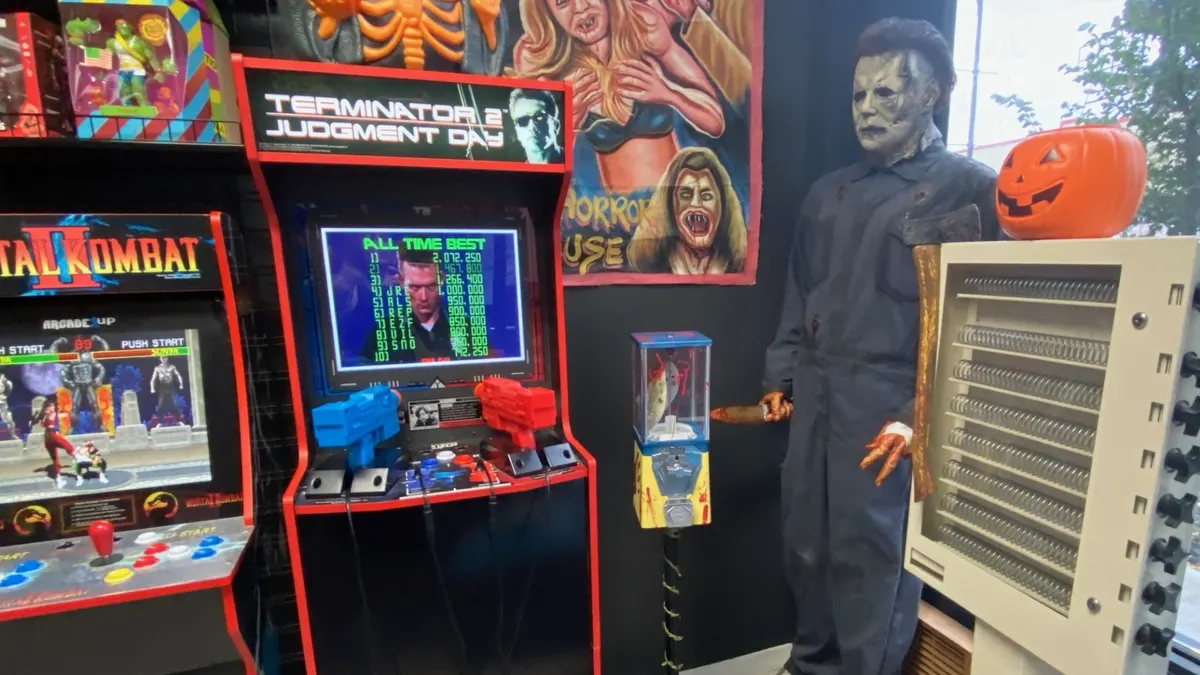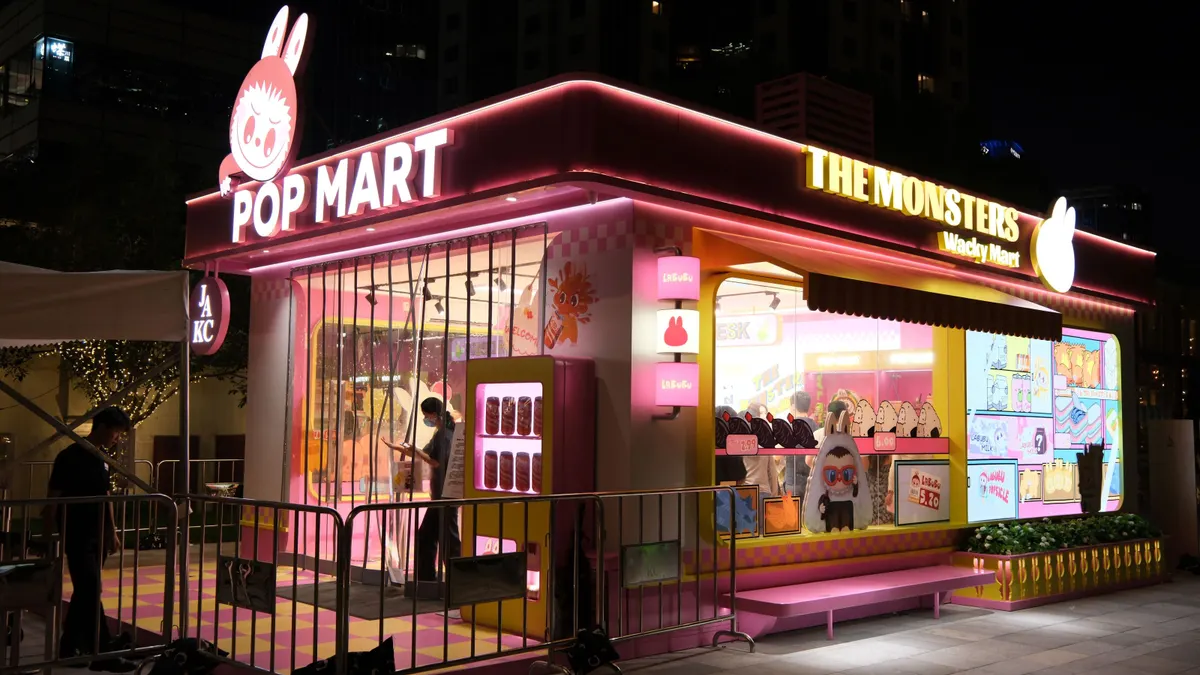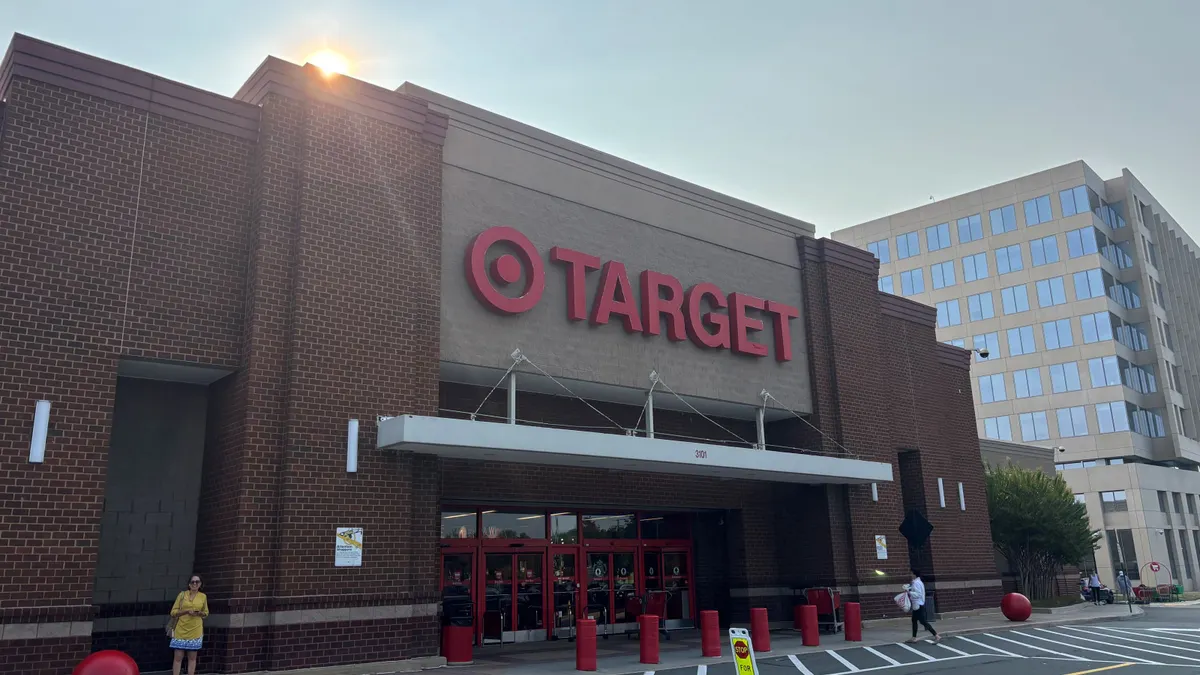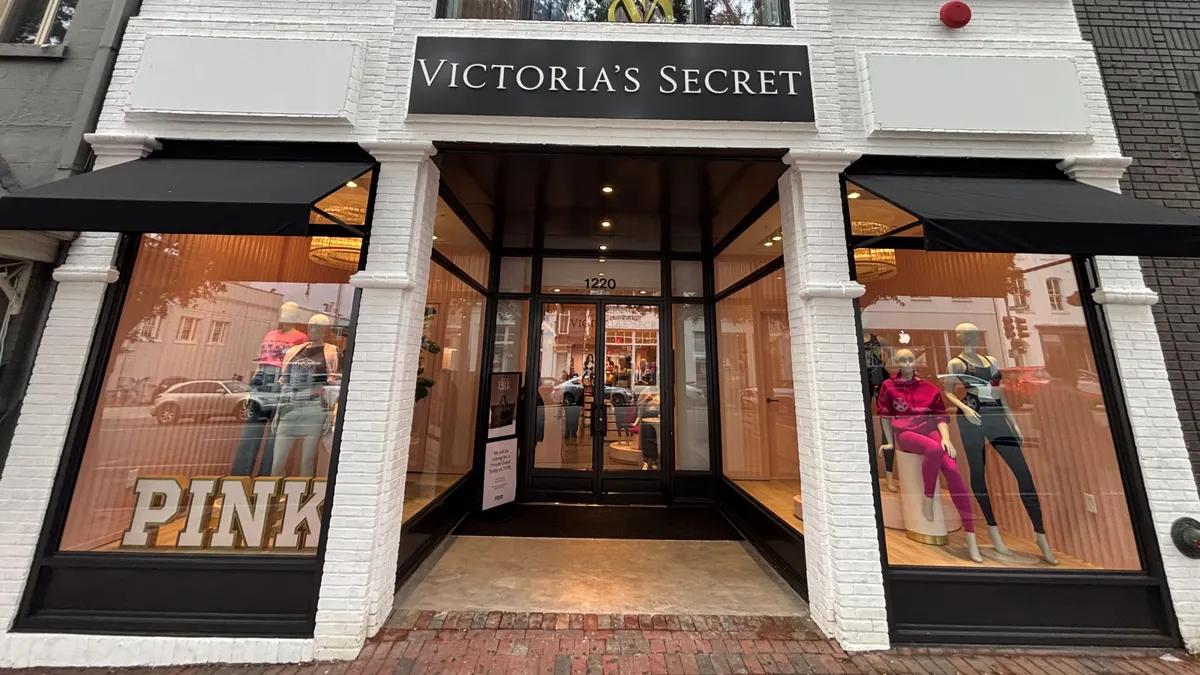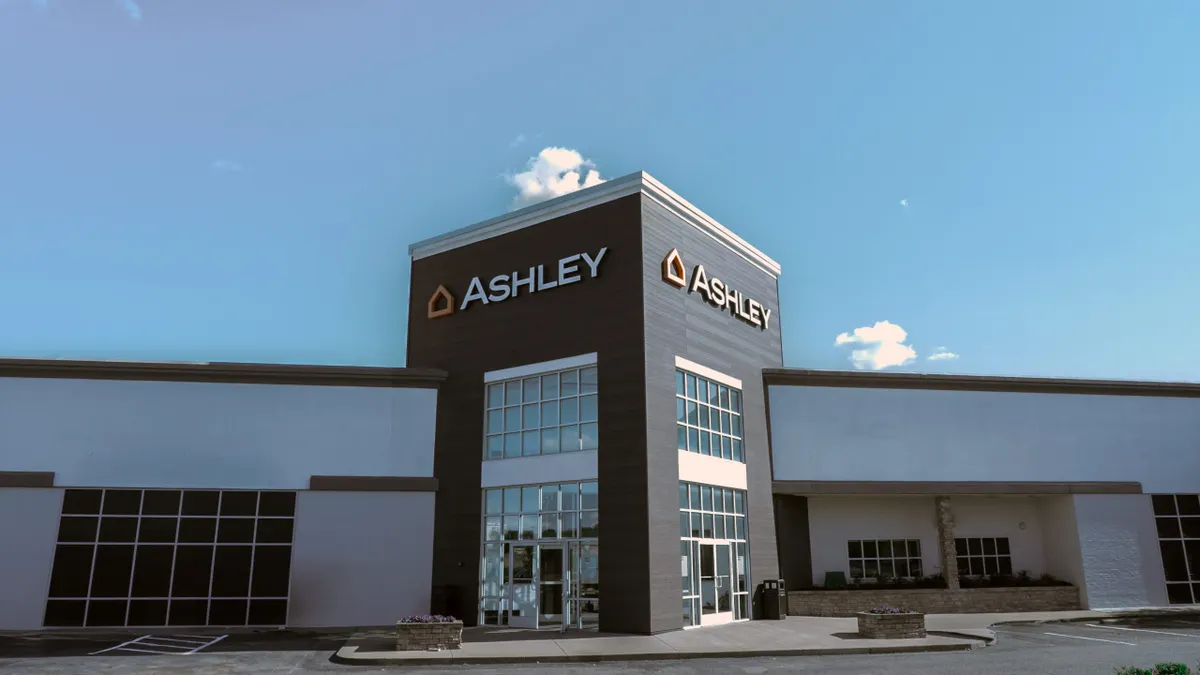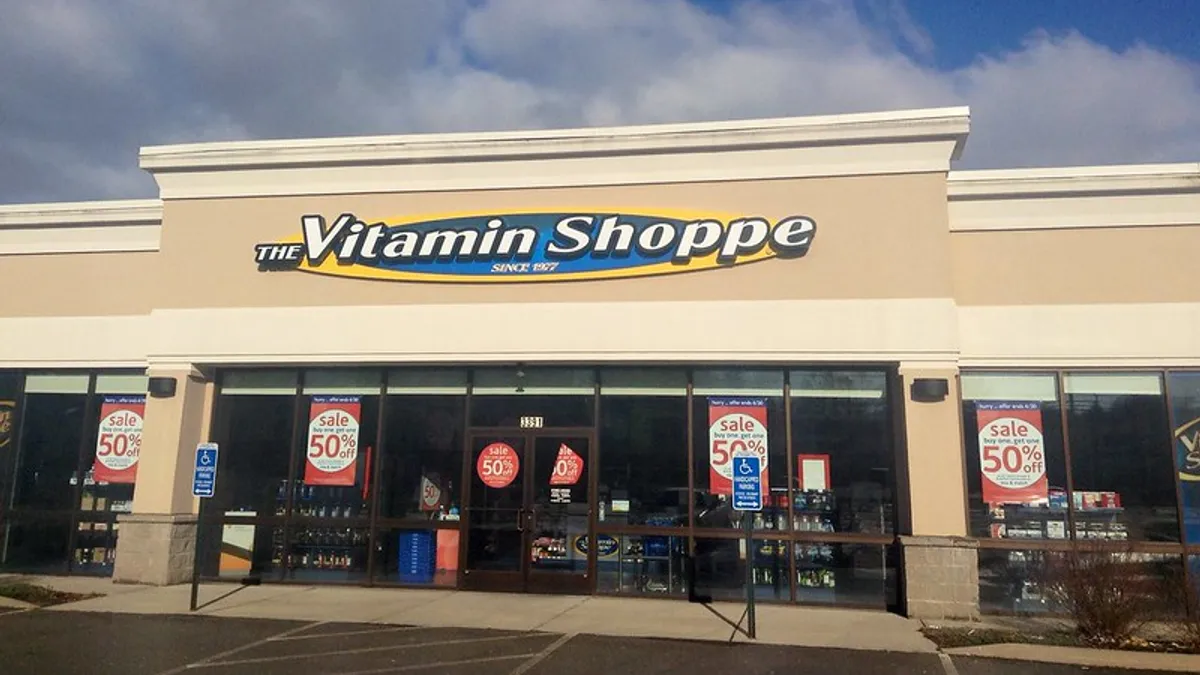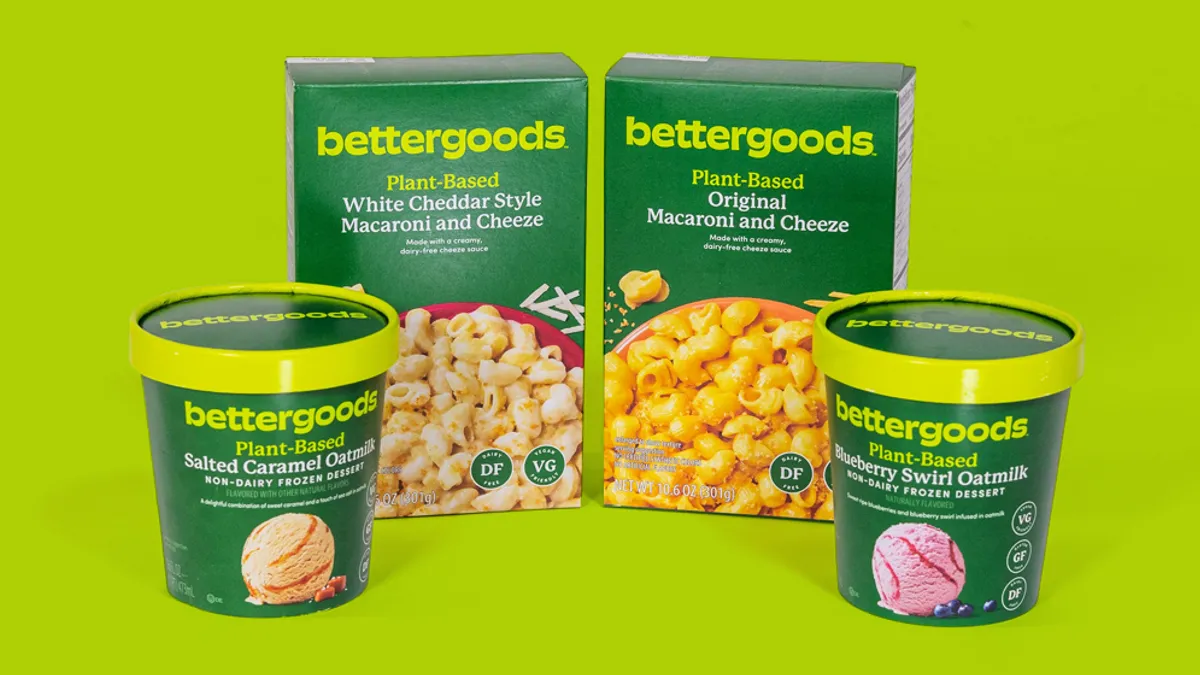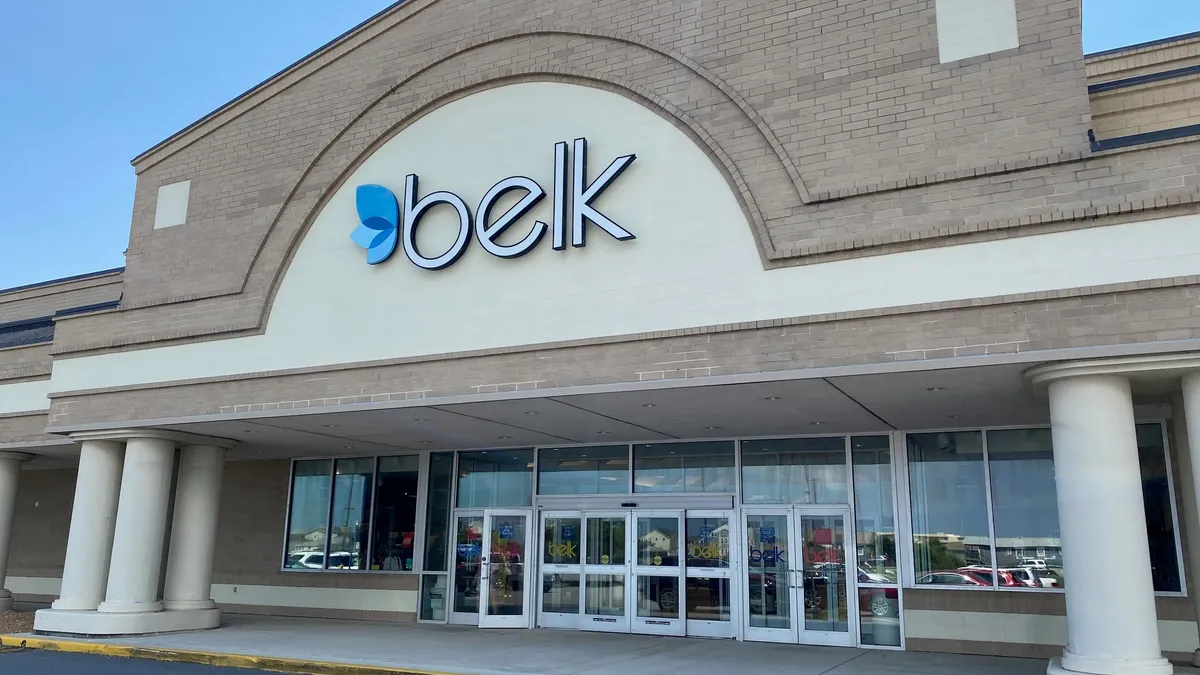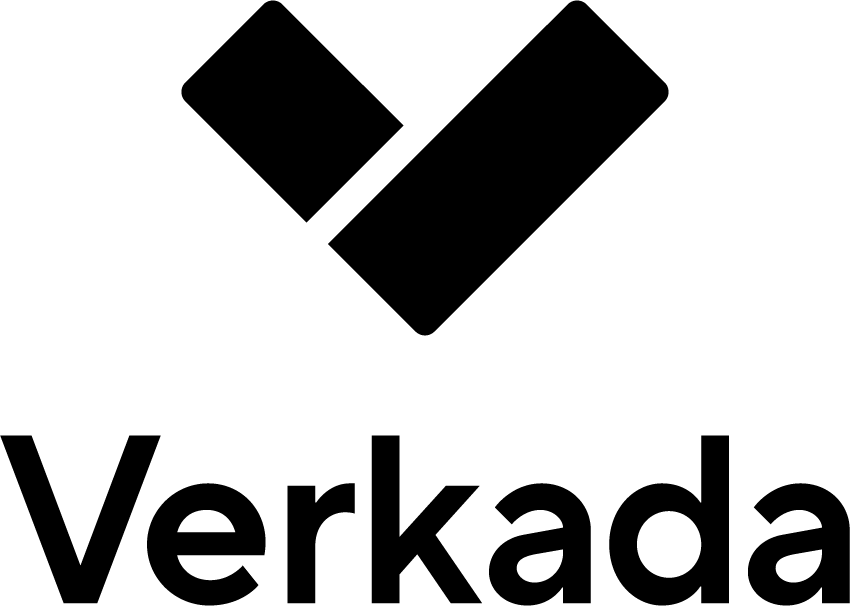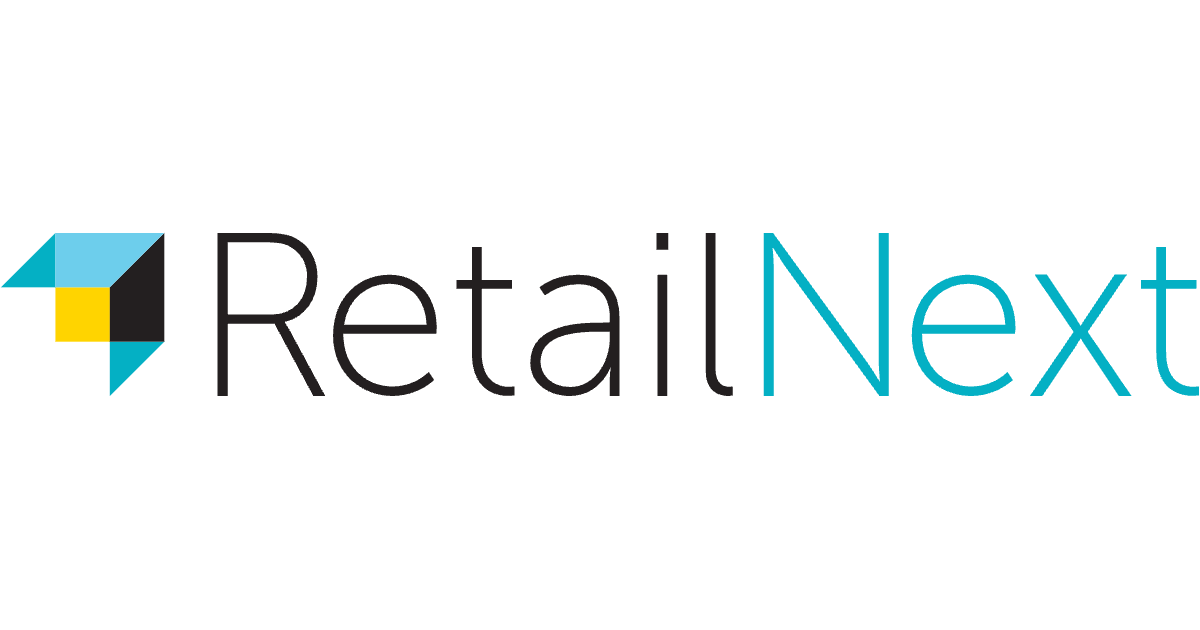Even though many are preparing to pull back on spending this holiday season, there’s one event where U.S. shoppers are creeping it real: Halloween.
More than three-quarters of adults will celebrate Halloween, treating it like an encapsulated version of the winter holiday season marked by "calculated indulgence,” PwC said in a new report.
Shoppers will spend an average of nearly $290 and, along with costumes and decorations, will indulge in markers of the season including visiting pumpkin patches and parades.
“Halloween is a retail master class in emotional merchandising,” PwC U.S. Consumer Markets Industry Leader Ali Furman said in an interview with Retail Dive. “Retailers are doing a great job of selling a feeling, not just a season or not just a product or a brand.”
And, it seems, the celebration is starting early.
Starting early — and becoming permanent
Popular Halloween memes began bubbling to the surface after the Fourth of July.
“July 5th is when the spooky community officially starts celebrating spooky season,” TikTok user Splash of Spooky explained in a post. “Why? Because the 4th of July is the last major holiday in stores before they transition to fall harvest and Halloween items.”
Retailers have picked up on shopper’s willingness for an elongated season, with many leveraging the midyear observance of Summerween as a way to start sales for the season. Michaels unveiled Halloween products in June on Friday the 13th, and proceeded to roll out themed drops in the months that followed. Home Depot did something similar, bringing out its seasonal assortment three months before Halloween.
“Halloween has really become a year-round emotional ritual."

Alison Furman
PwC Consumer Markets Industry Leader
Stores “did a nice job with testing price elasticity early in the season,” Furman said. “They put things on the shelves at full price. They ran promotional strategies early to test and learn. And I think it’s a great dress rehearsal for the Christmas holiday.”
And it worked. Half of customers started shopping for Halloween in September or earlier, per the National Retail Federation. It’s also big business, with Halloween spending expected to reach a record $13.1 billion in 2025, up nearly 13% year over year.
There are also signs that consumers may be willing to think of spooky season in a more comprehensive, year-round way due to the popularity of the subject matter. Last year, a Blumhouse commissioned survey reported that a majority of horror fans consider watching a movie from the genre as a family bonding activity and 44% watch horror films all year versus saving it just for a season. The genre resonates strongly with a younger audience.
Other types of companies are putting money behind horror experiences. Universal Destinations and Experiences announced this summer it would open a year-round immersive horror theme park, dubbed Universal Horror Unleashed, in Chicago. The 114,000-square-foot building will contain mazes, themed bars and a retail space.
The popularity of fright may mean there is an additional opportunity for year-round specialty retail.
Chicago contains a number of stores that lean into darker themes, including Bucket O Blood, which specializes in fantasy, horror and sci-fi books, and punk and metal records. The Alley focuses on subversive apparel and declares itself “a safe place for weirdos, freaks and misfits” and The Horror House Shop specializes in horror-themed T-shirts, figurines, posters and other merchandise.
The reasons why customers may be drawn to this type of retail, perhaps surprisingly, centers on joy.
“Halloween has really become a year-round emotional ritual,” said Furman. “It has broad emotional appeal. It’s kind of like cultural permission to indulge — a way of being playful, a way of feeling like you have a broader sense of community, something that you’re sharing with your neighbors and your friends.”
“It plays into this trend of comfort culture,” Furman said. “This spooky sensation is becoming part of comfort culture that people crave.”
The Gen Z of it all
Gen Z and millennials in particular are leading the way in Halloween participation. Specifically, Gen Z is driving the culture around the season, per PwC. That is particularly interesting during a 2025 holiday season that has forecast Gen Z pulling back enough to send overall sales down 5%.
But, that’s not the cohort’s approach to Halloween. “It’s a splurge,” Furman said.
“Price is Gen Z’s love language, because they have grown up in an era of rising costs,” Furman said. “It’s not that they won’t splurge or that they’re only looking for items that are affordable. It’s just price has to have a story behind it.”
And even though 70% of the cohort will shop for Halloween online this year, it is worth noting that Gen Z is very open to physical retail.
Research has shown Gen Z prefers to shop in person, despite their digital upbringing. Nearly three-quarters of Gen Z shop in person at least once a week, according to research from Adyen.
What is interesting about Gen Z is that sales are not corresponding in store with a foot traffic increase, per PwC, which means there is an opportunity for retailers to convert in-store sales. Halloween stores are primed to do just that because they are rooted in experience and make shopping a treasure hunt.
“What’s important to Gen Z today is likely going to be important to other generations tomorrow,” Furman said. “And they love Halloween. It’s a great occasion to study from a retail standpoint … How can I replicate this ecosystem of experience into other parts of the retail cycle?”



